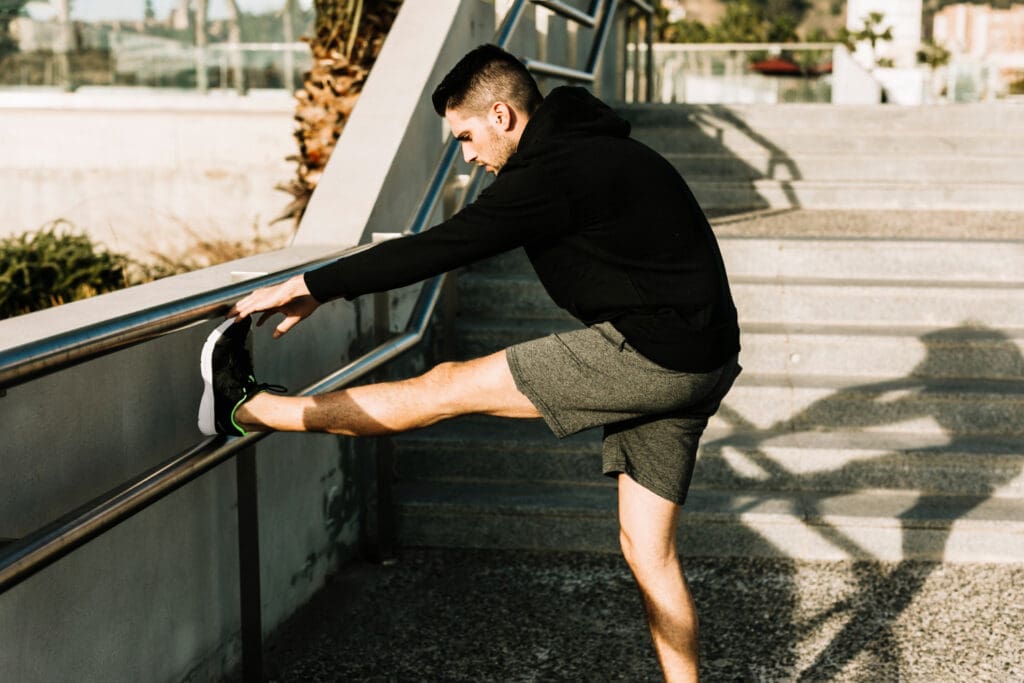Ankle sprains are pretty common and often more of a pain than anything else. The problem happens when one of the ligaments supporting your ankle gets stretched too far, or even torn, usually because you landed wrong while walking or playing a sport. People of all ages can get an ankle sprain, and they can happen in the middle of a game or simply by stepping off a curb the wrong way. It’s important to understand what an ankle sprain is and how to deal with it, as it can keep you from doing everyday things comfortably.
Understanding and preventing ankle sprains can save you a lot of trouble and discomfort. These injuries can sneak up on you, especially if you don’t see the risks in your daily activities. Imagine playing basketball and suddenly twisting your ankle, leading to weeks of hobbling around — not fun, right? By knowing the causes and learning how to steer clear of them, you can help protect yourself. Keeping your ankles healthy is more than just avoiding injuries; it’s about maintaining an active lifestyle without interruptions.
Common Causes of Ankle Sprains
There are many ways those pesky ankle sprains can occur, often when we least expect them. Here are some of the typical culprits:
– Slipping or Tripping on Uneven Surfaces: Wet surfaces, loose gravel, or unexpected bumps can catch anyone off guard. Being careful around these hazards can help, but sometimes they’re unavoidable.
– Sports Activities and Physical Exertion: Playing sports can be tough on your ankles, especially if they involve a lot of jumping or sudden movements. Sports like basketball, soccer, and tennis are popular scenarios for sprains to occur.
– Wearing Improper or Unsupportive Footwear: Shoes that don’t fit well or lack proper support can make you more prone to rolling your ankle. It’s essential to wear the right footwear for the right activity.
– Previous Ankle Injuries and Instability: If you’ve sprained your ankle before, you’re more prone to doing it again. This is due to weakened ligaments and instability, which make your ankle less resistant to another twist or turn.
By recognizing these common causes, you can be more alert and take specific precautions to reduce your risk. Simple actions such as checking the condition and fit of your shoes and being mindful when walking on tricky surfaces can make a big difference in keeping your ankles safe.
Symptoms of Ankle Sprains
Recognizing an ankle sprain quickly can make a big difference in your recovery journey. Here are some of the tell-tale signs to look out for:
– Pain and Tenderness: Right after the injury, you’ll likely feel pain around the affected area. Pressing on the ligaments might hurt a lot, indicating that something’s amiss.
– Swelling and Bruising: These symptoms often pop up soon after a sprain. Swelling can make your ankle look puffy and feel stiff, while bruising might show up as a discolored area on your skin.
– Limited Range of Motion: Ankle instability or pain can cause trouble while moving your foot. This might make walking a challenge or nearly impossible without discomfort.
– Instability and Weakness: Feeling like your ankle might give way when you put weight on it is another red flag. This lack of stability indicates potential ligament damage.
Being aware of these symptoms allows you to identify a sprain early on, promoting timely care and recovery.
Prevention Tips for Ankle Sprains
While ankle sprains can happen unexpectedly, there are steps you can take to reduce the risk. Here are some practical tips:
1. Warm-Up Properly: Before engaging in sports or strenuous activities, make sure to warm up and do some stretching exercises. This prepares your muscles and ligaments, making them flexible and responsive.
2. Choose Supportive Footwear: The right shoes can be lifesavers. Pick pairs that offer good ankle support and fit comfortably. This minimizes the risk of twisting your ankle during activities.
3. Strengthening Exercises: Incorporate exercises that target ankle stability into your routine. Things like ankle circles, calf raises, and heel walks build strength and flexibility.
4. Be Cautious on Uneven Surfaces: Stay alert when walking or running on uneven terrain. Adjust your speed and movements based on the conditions to keep yourself safe.
Following these tips can significantly lower your chances of experiencing an ankle sprain, so you can stay active and mobile.
Visiting a Specialist for Ankle Sprains
Professional evaluation and treatment can offer numerous benefits. At Waukee Feet, you can find expertise in ankle care, ensuring your recovery is in good hands. They provide various treatment options, including advanced technology and personalized care plans, to cater to your specific needs.
Keep Your Ankles Strong and Healthy
Recap of key points on understanding and preventing ankle sprains. Encouragement to take preventative measures seriously. Invitation to visit Waukee Feet for expert ankle care and treatment.
To keep your ankles in top shape and tackle any issues head-on, explore how to identify, manage, and prevent ankle sprains – just sprains. Trusted resources like Waukee Feet offer valuable insights and effective solutions tailored to your needs. Embrace a lifestyle that lets you move with confidence and ease.

